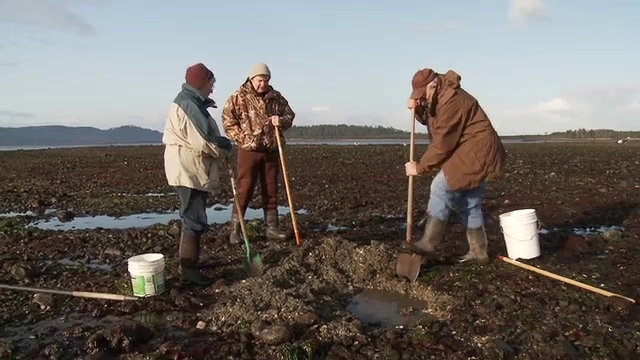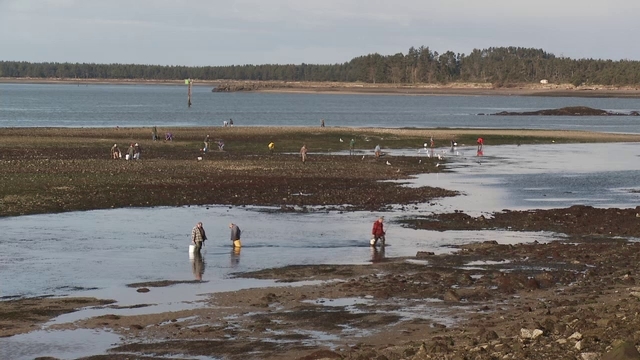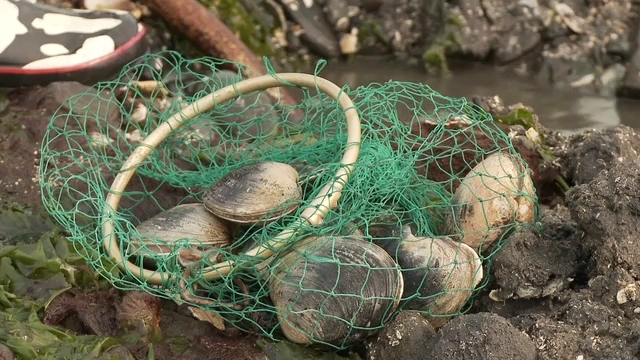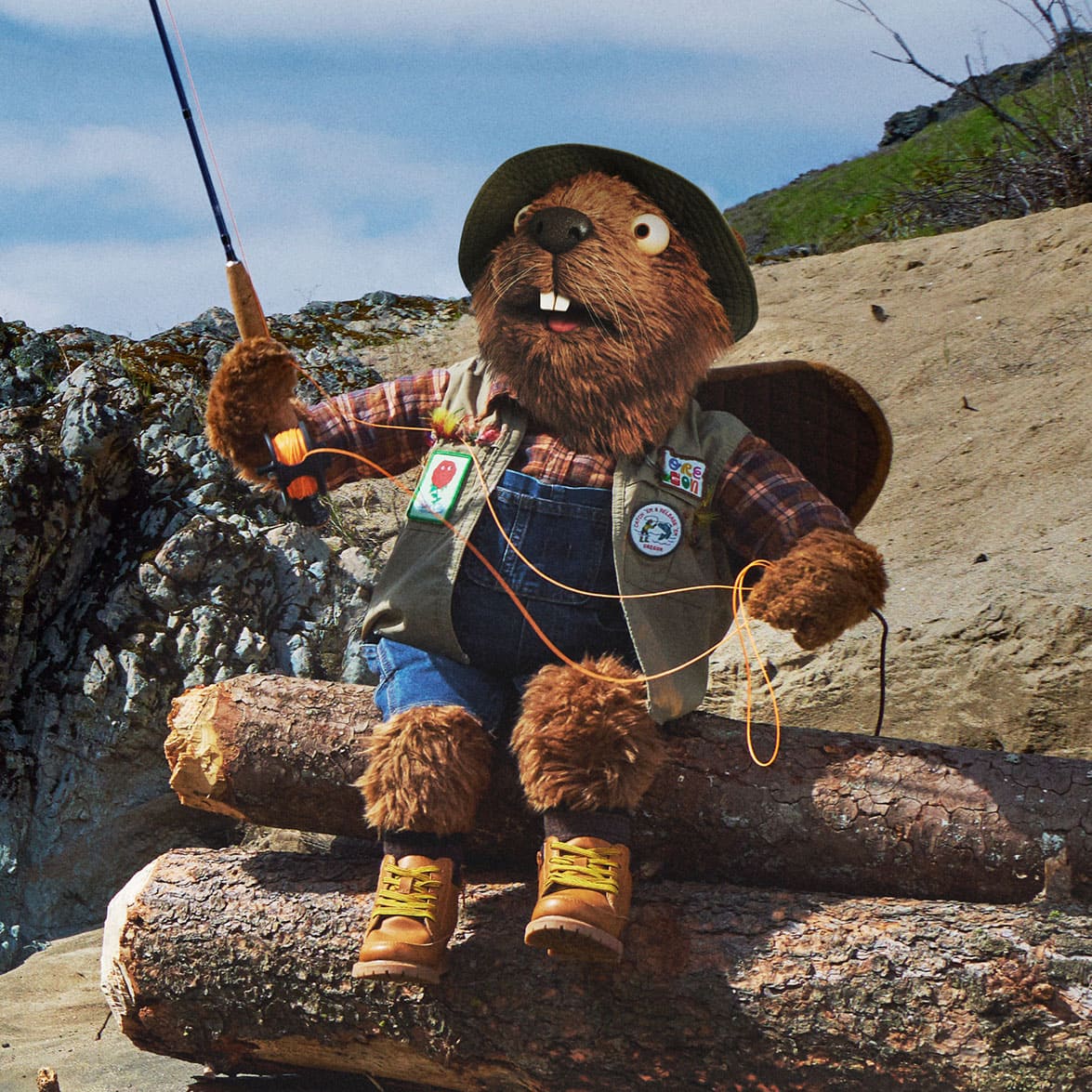Just because the calendar has moved to winter doesn’t mean you have to give up outdoor adventure that pays off with supper from the sea! In fact, when the minus low tides shift to night time hours, I simply adjust my tactics and techniques with warmer clothing and a headlamp or lantern to dig or rake cockles, quahogs or steamers!
Each year, minus low tides invite thousands to the Coast – they wear boots and carry shovels and rakes and buckets. They come to play in estuaries stretching from Coos Bay to Tillamook and dig their supper from the sea and harvest Oregon’s varied bay clam species.
Norm and Bonnie Clow traveled to Tillamook Bay from their home in Dayton. The Clow’s have been digging their dinner on the bay for more than sixty years and Norm offered well-earned advice for the novice clam digger. “Keep digging,” Clow said with a chuckle. “Usually, the clams are thick enough that if you dig one hole and excavate out, you will have little problem harvesting a limit.”
The clams are called cockles, quahogs or steamers. Jeff Folkema, a local guide and the owner of Garibaldi Marina, showed off a half dozen of the prized horseneck clams that he harvested from the bay. He said they are called “gaper” clams because of the “gape” in the shell where the neck pokes through. “This is a nice size,” he said while handling a hefty 2-3 pound grapefruit-sized bivalve. “This is pretty average size with a lot of meat. A good sized clam but I have seen much bigger too.”
Jeff added that clam diggers 14 years and older are required to purchase an Oregon Shellfish License. “And remember that each person who is harvesting clams must have their own container, a bucket or a clam net on their belt – even a plastic bread bag will do – because you cannot lump other people’s clams into your container; you’ll get a ticket for that.”
Keep your eyes open for Oregon Department of Fish and Wildlife placards that show pictures of the different clams species along with the harvest limits and other regulations.
Biologist Mitch Vance said that abundant food, reliable cold, clean water contribute to perfect habitat for bay clams populations in most of Oregon’s coastal estuaries.
As the diggers gather their clams, ODFW biologists gather information from the diggers on the harvest, the location and quantity of the catch. Vance added, “We are trying to get some really specific location information on which bay clam species are in a single hole – so our surveyors will walk up to a recreation digger, tell them what he’s doing, take a GPS point and then mark what species they’re getting from that hole.”
The work has been ongoing for five years, documenting the clam catch in four Oregon estuaries including Coos Bay, Yaquina Bay, Netarts and Tillamook Bays. Recently, ODFW revealed remarkable results from their research: new “clam maps” that are available for free download or in brochure form and show the results of the study.
Biologist Tony D’Andrea said, “We have maps for Garibaldi that show where the four recreationally important clams are – including butters, cockles, gapers and steamers – it’ll tell you where they are found in that particular location. You can find those ‘hot spots’ for the different clam species that you might be interested in gathering.”
There is also a delicious reward for the clam digger’s efforts: bay clams can be delicious according to local resident Don Best who showed off his limit of quahog clams. One of his all-time favorite recipes is an old-fashioned clam fritter. “All it takes is a little cracker crumb, flour and egg – perhaps some chopped onion. Chop up the clams, mix them with the batter and fry them in a skillet with oil.”
The new clam map brochures are available at many ODFW offices or you can go to their website and download the maps to take with you when you visit the coast.
Keep in mind that minus low tides thru the winter months occur at night, so go prepared by dressing warm and carry a light source like a lantern or head lamp – it’s a different sort of experience, but one that can pay off with a fine Oregon supper from the sea.
Don Best’s Clam Fritter Recipe
Makes 15 to 18 fritters
Vegetable oil
1 cup unsifted flour and a half cup of bread crumbs
2 teaspoons baking powder
1/2 teaspoons salt
2 eggs
1/2 cup milk
2 cups chopped clams
1 tablespoon vegetable oil
In deep fat fryer or large heavy skillet, heat oil to 375 degrees.
Sift together flour, baking powder and salt; set aside.
In medium mixing bowl, beat egg, milk, 1/4 cup reserved clam liquid and 1 tablespoon oil.
Stir in dry ingredients and clams. Drop mixture by heaping tablespoonfuls into hot oil.
Fry until golden on all sides. Drain on paper towels. Refrigerate leftovers.



